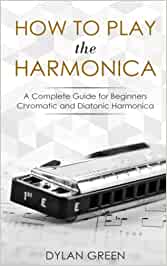
A musical adventure with the harmonica. The basics.
See Harmonica in the Muzyczny.pl store
Why should you be interested in a harmonica?
The harmonica is one of the smallest and most handy musical instruments. Due to its very characteristic sound and interpretation possibilities, it finds its wide application in many musical genres, including blues, contra, rock and folk folklore. It also belongs to this group of instruments that anyone who wants to learn to play can afford. A mid-range budget model can already be purchased for several dozen zlotys, which undoubtedly has a decisive influence on its popularity.
The development of the harmonica popularity
The harmonica gained its greatest popularity in the USA as a folk instrument. She got there thanks to German emigrants in 1865, and thanks to its relatively low price, it began to enjoy great popularity among the lower social classes. Famous musicians also contributed to the popularity and dissemination of this instrument, using the harmonic as a complement to their main instrument. Among others, Jimi Hendrix, known mainly as an outstanding guitarist, also had a harmonica attached to a special holder while playing the guitar. If we look at the artist’s biography, we will find out that his musical adventure began with the harmonica.
Types of harmonica
For greater use of the harmonica, various variations of this instrument have been developed. We can divide them into appropriate types depending on the possibility of producing sounds and their outfit. And so we have harmonica: diatonic, chromatic, octave, tremolo – Viennese and accompaniment. Each of them uses a different playing technique and each of them finds its main application in different musical genres. Also, each of this variation can be in a different outfit, thanks to which it is possible to play the melody in any key. Of course, this forces the versatile harmonica player to have a whole collection of harmonica if he wants to find himself in every key and style.
Construction of the harmonica
The harmonica is quite simple and consists of four basic elements: a body commonly known as a comb, two covers, two reeds and fasteners in the form of screws or nails. The comb is most often made of wood or plastic, although you can find combs made of other materials, including made of metal or glass. Of course, depending on what kind of material the instrument is made of, we will get the sound too.
The sound of the harmonica and how to get it
The sound of the harmonica is similar to the accordion, which results, among other things, from the similar structure and principle of operation. Of course, the harmonica is many times smaller than the accordion, but from a technical point of view, both instruments have a lot in common. The harmonica comb, on which the reeds are mounted, can be likened to an accordion speaker, where the reeds are also attached. In both cases, the sound is produced by reeds that are stimulated by blowing air. This is due to the fact that both instruments belong to the group of wind instruments and it is the air that is an important element for producing the sound. The difference is that in the case of the harmonica we force the air in with our own lungs and mouth, while in the case of the accordion we use the open and closed bellows.
The first harmonica – which one to choose
The simplest harmonica seems to be the best to start with. Such basic harmonics include the diatonic XNUMX-channel in the C tuning. The C tuning means that we will be able to play the basic C major scale and simple melodies in this key on it. The individual channels can be related to the sounds under the white keys, e.g. in the piano, bearing in mind, however, that due to the construction of the harmonica, a different sound is obtained on the channel when inhaling, and another sound when exhaling.
Summation
Undoubtedly, the harmonica is one of the very interesting musical instruments. It is from there that we can start our musical adventure, or it can be a perfect complement to our larger instrumentation. Its greatest advantage is, above all, its small size, thanks to which the harmonica can always accompany us. Learning should not be too difficult and after mastering the basic principle of this instrument, we will be able to play simple melodies.





